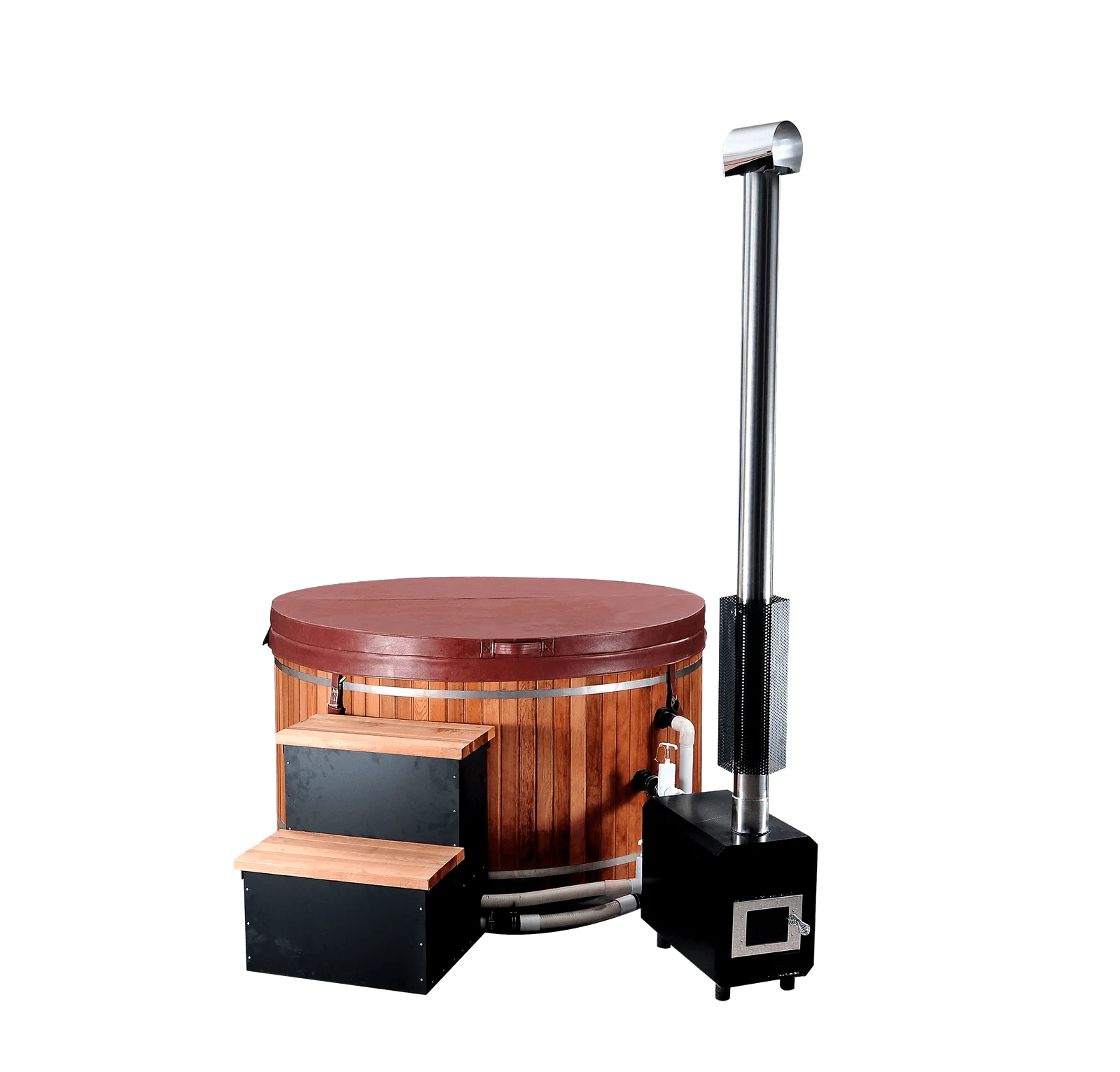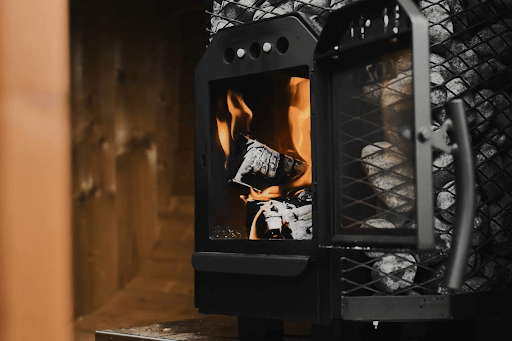A proper sauna ventilation not only maintains fresh air circulation but also controls humidity, preserves sauna materials, and protects users from stale, oxygen-poor air.
Understanding sauna ventilation requirements and applying best practices will ensure you enjoy a safe, comfortable, and rejuvenating sauna every time.
Key Takeaways
- Ventilation is essential for fresh air, comfort, and sauna longevity.
- Placement of vents significantly impacts airflow quality and heat distribution.
- Different systems (passive vs. active) suit different sauna setups, especially indoor vs. outdoor.
- Regular maintenance is key to avoiding airflow blockages and optimizing sauna performance.
Why Do We Need Sauna Ventilation?

Photo Credit: The Sauna Heater | Youtube
Ventilation in saunas isn’t just a design choice; it’s necessary for maintaining air quality and user safety. Fresh air circulation prevents humidity and odor buildup, which can cause mold, decay, and even health risks like dizziness from low oxygen levels. Proper airflow also improves temperature distribution, so users aren’t subject to uncomfortable hot and cold spots.
1. Maintaining Air Quality and Oxygen Levels
Saunas are enclosed spaces that heat up quickly, so fresh air circulation is essential to keep oxygen levels sufficient and air quality high. Without proper ventilation, oxygen levels drop, leading to stale, uncomfortable air and potential dizziness for users due to reduced oxygen levels.
2. Humidity Control and Mold Prevention
High temperatures and humidity levels in a sauna can create ideal conditions for mold growth and material decay if air is not refreshed consistently. Ventilation prevents excessive moisture buildup, protecting wooden materials from rot and extending the sauna’s lifespan.
3. Even Temperature Distribution
Proper airflow also helps maintain a consistent temperature throughout the sauna. Without ventilation, heat may layer unevenly, with hot air gathering near the ceiling and cooler air settling toward the floor. This balanced heat distribution ensures a comfortable experience at all levels, avoiding uncomfortable hot or cold spots.
4. Odor and Toxin Removal
As users sweat, odors and natural body oils accumulate. Ventilation helps to remove these particles, keeping the air fresh and free from unpleasant odors. Additionally, any residual byproducts from wood or heat-treated materials can escape, providing a cleaner, healthier atmosphere.
5. Enhancing the Sauna Experience
Good ventilation directly impacts user comfort, allowing users to breathe easily and relax for longer periods. Oxygen-rich air enhances the sauna’s therapeutic effects, ensuring that each session feels more refreshing and invigorating.
Indoor vs. Outdoor Sauna Ventilation

Outdoor Red Cedar Barrel Sauna Installation by Shym Saunas
Outdoor Saunas
Outdoor saunas typically require less ventilation intervention, as they’re positioned in open-air environments where passive ventilation naturally maintains air quality. These saunas often use simple intake and exhaust vents, positioned near the heater and on the opposite wall, to draw fresh air from the outside and release stale air.
Since they rely on natural airflow and pressure differentials, outdoor saunas benefit from outdoor temperature variations to aid airflow, minimizing the need for mechanical or active ventilation systems.
Note: Outdoor Saunas may be Affected by Weather and Seasons
Outdoor saunas can be affected by external weather conditions. In cold climates, outdoor saunas may need adjustments, like keeping intake vents partially closed at the start of a session to retain heat. During warmer seasons, outdoor ventilation can work even more effectively, as natural convection may intensify with greater external temperature differences.
Indoor Saunas
Indoor saunas, on the other hand, require a more controlled approach to ventilation. Limited access to fresh outdoor air makes it important to manage airflow to avoid excess moisture buildup, which can lead to issues like mold, rot, and odor in adjacent rooms. Connecting exhaust vents to the building’s HVAC system is often recommended, as this setup can pull stale air out of the sauna and prevent humid air from seeping into surrounding spaces.
In larger indoor saunas, active systems like fans or powered exhausts may be necessary to circulate fresh air continuously, especially in spaces that lack significant temperature differences for natural airflow.
Types of Sauna Ventilation Systems

Photo Credit: How to With Lech | Youtube
What is a Passive Air Vent?
Passive or natural ventilation relies on the natural movement of air, typically through intake and exhaust vents. It’s cost-effective and works well for outdoor or smaller saunas where external temperature differences support airflow. However, passive fresh air intake systems may struggle in indoor settings with minimal temperature variance.
Active Ventilation
Active ventilation systems use mechanical elements like intake and/or exhaust fans to force air circulation. While pricier, active systems deliver consistent airflow regardless of temperature or external conditions. This makes them ideal for larger, indoor, or enclosed saunas where fresh air supply needs to be maintained continuously.
Intake and Exhaust Vents Placement
Intake Vent Location
The intake vent should be placed on the same wall as the heater, ideally 12 inches (30 cm) above the floor, allowing fresh, cool air to flow directly toward the heater, warming as it enters. This creates an even temperature distribution within the sauna.
Exhaust Vent Location
For best results, the exhaust vent is typically located on the opposite wall, near the ceiling. This setup creates a convection loop, allowing stale, warm air to rise and exit easily. In larger saunas, you might consider adding a second exhaust vent beneath the benches to improve airflow around users’ feet.
Is it Possible to Over-Ventilate? How to Balance Temperature and Humidity in Saunas
1. Risk of Over-Ventilation
Over-ventilation is a concern in saunas, as too much airflow can quickly expel heat, cooling the sauna to an uncomfortable level. This can disrupt the ideal sauna environment, especially when using steam or essential oils, where a consistent heat level is critical for comfort.
Over-ventilation may also create drafts, making it hard to maintain the desired humidity and warmth needed for a balanced sauna experience.
2. Balancing Temperature and Humidity
To find the right balance, start a session with vents partially closed. This helps the sauna heat up quickly, as less heat escapes. Once the sauna reaches the target temperature, open the intake and exhaust vents gradually to introduce fresh air without significant heat loss.
This gradual adjustment preserves warmth while maintaining air quality and balanced humidity levels. Users often leave vents partially open during steam sessions to allow moisture to escape, but adjust them as needed to prevent drafts.
Ventilation Maintenance and Safety
To keep your sauna’s ventilation system working effectively, regular maintenance and safety checks are essential. Ventilation systems can experience blockages and airflow issues over time, which may compromise air quality and sauna comfort. Here’s a list of key maintenance and safety practices to ensure optimal performance and safety:
1. Prevent Blockages
Dust, lint, or debris can accumulate in both intake and exhaust vents, especially near heaters. These blockages restrict airflow, reducing ventilation efficiency and potentially increasing moisture. Regularly clean or inspect vents, especially in passive systems, to keep air moving freely and maintain consistent temperatures.
2. Install a Carbon Monoxide Detector (For Wood-Fired Saunas)

Photo Credit: Alibaba
In saunas with wood-fired heaters, maintaining proper airflow is critical to prevent carbon monoxide buildup. Installing a carbon monoxide detector is an essential safety step for any enclosed or well-insulated sauna with limited fresh air. This device provides an extra layer of safety by alerting users to dangerous gas levels.
3. Use Adjustable Vents
Adjustable vents offer control over airflow, allowing you to modify ventilation based on the number of users and changing outdoor conditions. Adjusting vents during sessions can improve both air quality and heat retention, allowing for a more comfortable sauna environment.
4. Inspect and Replace Worn Parts
Over time, sauna vent covers and any mechanical components (e.g. intake and exhaust fans) may wear out, especially in active ventilation systems. Inspect these parts regularly and replace worn-out items to ensure consistent, safe airflow.
Conclusion
Whether you’re installing a new sauna or optimizing an existing one, understanding ventilation can make all the difference. By following best practices in sauna ventilation, you create an optimal environment that enhances relaxation and reduces the risk of mold or structural damage.
Looking to elevate your sauna experience? Explore our expert tips and products to ensure perfect ventilation in your sauna. Visit Shym Saunas for high-quality solutions and all the latest information on sauna care. Feel free to explore our projects gallery to inspire you with your DIY sauna builds.
FAQs
Why is ventilation necessary in saunas?
Ventilation prevents stale air, improves comfort, and helps maintain the sauna’s structural integrity by controlling humidity.
What’s the difference between passive and active ventilation?
Passive ventilation relies on natural airflow through vents, while active systems use fans for consistent air exchange, ideal for larger or indoor saunas.
Where should sauna vents be placed?
Place the intake vent near the heater, about 12 inches from the floor, and the exhaust vent on the opposite wall, near the ceiling, to create effective airflow.
How do I maintain sauna vents?
Regularly inspect vents for blockages and dust, and use adjustable vents to control airflow based on sauna conditions.
Can I use a sauna without ventilation?
No. Lack of ventilation leads to stale air, excessive moisture, and potential health risks like dizziness due to low oxygen levels.









